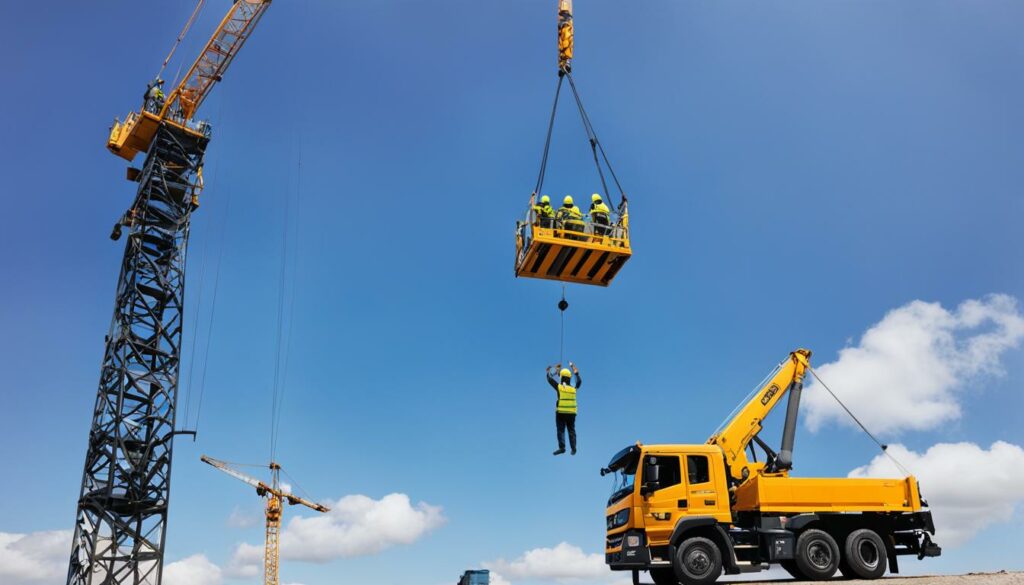Migrating a WordPress website from one host to another can be a stressful event, especially for those doing it for the first time. To help make the process easier, we have put together a detailed step-by-step guide for WordPress migration. This guide will cover the reasons for migrating a WordPress site, the time it takes, the pre-migration checklist, different ways to migrate the site, and the post-migration checklist. We recommend using WordPress Hosting from BoostedHost for optimal performance. Sign up now through this link: www.boostedhost.com/wordpress-hosting.
Key Takeaways:
- Migrating a WordPress site requires careful planning and execution.
- BoostedHost offers reliable WordPress hosting for optimal site performance.
- Follow a pre-migration checklist to ensure all necessary information is gathered.
- There are multiple methods of migrating a WordPress site, including self-hosted import, migration plugins, and manual migration.
- After migration, perform a post-migration checklist to finalize the process and ensure everything is functioning correctly.
When You Might Need to Migrate a WordPress Website
There are several reasons why you might find yourself in a situation where you need to migrate your WordPress website. Understanding these reasons can help you determine if it’s time to make a move. Here are a few common scenarios where migrating your WordPress site becomes necessary:
- Dissatisfaction with your current hosting provider: If you’re experiencing performance issues, slow loading times, or frequent downtime with your current host, it might be time to consider migrating to a new hosting provider that offers better WordPress performance and stability.
- Need for more resources: As your website grows and attracts more traffic, your existing hosting plan may not be able to handle the increased load. Migrating to a hosting provider that offers scalable resources will ensure your site can continue to perform optimally.
- Desire to switch to a different type of hosting: Maybe you’re currently on shared hosting and want to switch to a virtual private server (VPS) or dedicated server for better control and performance. Migrating to a new host allows you to make this transition seamlessly.
- Moving from development to production: If you’ve been working on a website locally or in a staging environment and now want to move it to the live production environment, migrating your WordPress site is essential.
By recognizing these signs and understanding when it’s the right time to migrate your WordPress site, you can take action to ensure your website’s performance, scalability, and functionality are optimized to meet your needs.
BoostedHost offers WordPress Hosting plans tailored for optimal performance and seamless migration. Sign up now through this link.
How Long Does a WordPress Site Migration Take?
The time required for a WordPress site migration can vary depending on several factors. It depends on the migration method chosen, the size of the site, and the internet connection speeds. On average, the tasks involved in migrating a WordPress site take about two hours, but the time it takes to download and upload data, as well as the time for domain propagation, can add up to 48 hours to the overall process.
When considering the time it takes to migrate a WordPress site, it’s essential to take into account the following migration factors:
- Migration Method: The method you choose to migrate your WordPress site will impact the overall time it takes. Different methods, such as manual migration, using migration plugins, or hiring professional migration services, have varying levels of complexity and time requirements.
- Size of the Site: The size of your WordPress site, including the number of pages, posts, media files, and plugins, can affect the migration duration. Larger sites with extensive content and media may take longer to download and upload.
- Internet Connection Speeds: The speed of your internet connection plays a role in the time it takes to transfer data between the old and new hosting providers. Faster internet speeds can significantly reduce migration time.
It’s important to understand that while the actual tasks involved in migrating a WordPress site may take a couple of hours, additional factors like downloading and uploading data, as well as domain propagation time, can extend the migration process to up to 48 hours.
Keep in mind that these time frames are averages and can vary depending on individual circumstances. The complexity of your site, the specific migration method chosen, and the efficiency of your internet connection all contribute to the overall time required for a successful WordPress site migration.
For a visual representation of the factors affecting WordPress site migration time, refer to the table below:
| Migration Factors | Time Required |
|---|---|
| Migration Method | Varies |
| Size of the Site | Varies |
| Internet Connection Speeds | Varies |
Note: The table above provides a general overview and may not reflect the exact time frame for your specific WordPress site migration.
Remember, every WordPress migration is unique, and the time required can vary. Considering the factors mentioned above and planning accordingly will help you have a smoother and more efficient migration experience.

Pre-Migration Checklist: What to Do Before Moving Your Site
Before migrating your WordPress site, it’s essential to gather all the necessary information and take the required steps to ensure a smooth transition. By following this pre-migration checklist, you’ll be well-prepared to move your site to a new host without any hiccups.
Gather the Necessary Information
Here’s a list of the essential information you need to have before starting the migration process:
- Access to the control panel of both the current and new hosts.
- File manager or FTP/SFTP account details for easy file transfer.
- Login information for both the old and new WordPress sites.
- The new host’s nameserver information.
- Domain registration details, including DNS settings.
Having this information readily available will save you time and ensure a seamless migration.
Install WordPress on Your New Host
If you’re moving to a new host that doesn’t offer a pre-installed version of WordPress, you’ll need to install it yourself. Most hosting providers offer a one-click WordPress installation feature, making it quick and straightforward.
If you’re unsure about the installation process, you can refer to the documentation or support resources provided by your hosting provider. Alternatively, you may consider seeking professional assistance to ensure a smooth installation.
Backup Your Old Site
Prior to migration, it’s crucial to create a backup of your old WordPress site. This ensures that you have a copy of your website’s files and databases in case anything goes wrong during the migration process.
You can use a WordPress backup plugin or access the backup feature provided by your hosting provider. It’s recommended to store the backup files securely, either on an external hard drive or a cloud storage service.
Note: Taking a backup is an essential part of the migration process and should not be skipped.

“A thorough pre-migration checklist is crucial to a successful WordPress site migration. Gathering all the necessary information and taking the required steps beforehand will ensure a seamless transition to your new host.”
3 Ways of Migrating Your WordPress Site to a New Host
When it comes to migrating your WordPress site to a new host, you have three main methods to choose from. Each method offers its own advantages and considerations, allowing you to find the best approach that suits your needs. Let’s explore these three migration methods:
1. Importing an Existing Self-Hosted WordPress Site via XML
If you already have a self-hosted WordPress site and want to move it to a new host, this method is for you. With the help of XML, you can export your existing site’s content, themes, plugins, and settings, and import them into your new host. This method is relatively straightforward and can be easily done using WordPress’s built-in import and export tools.
2. Using a WordPress Migration Plugin
Another popular method is to utilize a WordPress migration plugin. These plugins automate the migration process, making it quick and convenient. Simply install the migration plugin on both your old and new hosts, follow the step-by-step instructions, and let the plugin handle all the heavy lifting. It’s a great choice for those who prefer a user-friendly and automated solution.
3. Manual Migration of Your WordPress Website
For those who prefer more control over the migration process, manual migration is an option. This method involves manually transferring files, databases, and settings from your old host to the new one. While it may require more technical knowledge and effort, manual migration grants you complete control over every aspect of the process, allowing for customization and fine-tuning.
Ultimately, the choice of migration method depends on your personal preferences and technical abilities. If you’re looking for a straightforward and hassle-free migration experience, using a migration plugin or importing via XML might be the best choice. However, if you desire full control and are comfortable with technical tasks, manual migration can offer you the flexibility you need.
To get started with your WordPress migration journey, we recommend WordPress Hosting from BoostedHost for optimal performance. Sign up now through this link: www.boostedhost.com/wordpress-hosting.
| Migration Method | Advantages | Considerations |
|---|---|---|
| Importing via XML | Easy to use with built-in WordPress tools | May require manual adjustments after import |
| Migration Plugin | Automated and user-friendly | Plugin compatibility and limitations |
| Manual Migration | Complete control and customization | Technical knowledge and time-consuming |
A Quick Word on WordPress Architecture
WordPress, the popular content management system, is built on a robust architecture comprising two primary components: the file system and the database. Understanding this architecture is crucial for ensuring a successful migration process. Let’s take a closer look at each component:
The File System:
At the core of WordPress is its file system, which contains all the files necessary for the proper functioning of your website. This includes themes, plugins, media files, and more. These files are stored on your hosting provider’s servers and are accessed by WordPress to display your website to visitors.
The Database:
In addition to the file system, WordPress relies on a database to store important data. This includes the content of your website, such as blog posts and pages, as well as user information, settings, and more. The database is where all the dynamic information of your website is stored, allowing WordPress to retrieve and display it to your visitors.

When migrating a WordPress site, it is essential to consider both the file system and the database. The files from the file system need to be transferred to the new hosting environment, while the database needs to be exported from the old host and imported into the new one. This ensures that all your website’s files and data are seamlessly moved to the new location.
By understanding the WordPress architecture and how the file system and database work together, you will be better equipped to navigate the migration process and ensure a smooth transition to your new hosting provider. Remember, for optimal performance and hassle-free migration, we recommend WordPress Hosting from BoostedHost. Sign up now through this link: www.boostedhost.com/wordpress-hosting.
Post-Migration Checklist: Finish Moving Your WordPress Site
After successfully migrating your WordPress site to a new host, you’re almost there! To ensure a smooth transition and make sure everything is working properly, there are a few important steps you need to take. Follow this post-migration checklist to finalize the migration process:
- Gain Access to Your New Site
- Reroute Your Domain Using the Hosts File
- Reactivate Your Plugins and Enable Caching
- Test Everything
- Point Your Domain Name to the New Host
First things first, make sure you have access to your new WordPress site. Check that your login credentials are working and that you can access the admin dashboard.
To ensure seamless domain rerouting, you can use the hosts file on your computer. This allows you to preview your site on the new host before pointing the domain name. Simply edit the hosts file and add an entry that maps your domain to the new host’s IP address. This step is optional but can be helpful for testing and making any necessary adjustments.
Re-enable any caching plugins or performance optimization plugins that you may have used on your old site. These plugins can help improve the speed and performance of your WordPress site on the new host. Make sure to configure them properly and test your site to ensure everything is functioning as expected.
Testing is a crucial step after migrating your WordPress site. Take the time to thoroughly test all aspects of your site, including page load times, navigation, forms, contact information, and any other essential features. Test on different devices and browsers to ensure a seamless experience for your visitors.
Finally, it’s time to point your domain name to the new host. Update the DNS settings with your domain registrar to direct your domain to the new host’s nameservers. This step ensures that visitors who type in your domain name reach the correct site on the new host.
By following this post-migration checklist, you can confidently complete the WordPress site migration process and ensure a successful transition to your new host. Remember, if you’re looking for reliable WordPress hosting, we recommend BoostedHost for optimal performance. Sign up now through this link: www.boostedhost.com/wordpress-hosting.
Do You Need to Transfer Your Domain Name to Your New Host?
During a WordPress site migration, transferring your domain name to the new host may or may not be necessary, depending on your specific situation and requirements.
If you decide to transfer your domain name, it’s important to understand the implications and consider the following:
Domain Name Transfer:
- Transferring your domain name involves moving the registration from your old hosting account to your new host.
- This process ensures that your website will be associated with the new hosting provider.
- Transferring your domain name may require additional steps and may incur transfer fees depending on the domain registrar.
DNS Propagation:
If you choose to transfer your domain name, you will need to wait for DNS (Domain Name System) propagation to complete. DNS propagation is the process of updating global DNS servers with the new hosting information. This process can take up to 48 hours to fully propagate worldwide.
Old Hosting Account:
Keep in mind that if you transfer your domain, you may need to keep your old hosting account active until the transfer is complete and DNS propagation is finished. This will ensure that your website remains accessible during the transition period.
Remember, transferring your domain name is not always required for a WordPress site migration. If you prefer to keep your domain name registered with your current domain registrar, you can simply update the domain’s nameservers to point to your new host’s server.
Now that you have a better understanding of domain name transfer and DNS propagation, you can make an informed decision based on your specific needs and requirements.
How Will You Migrate Your WordPress Website?
When it comes to migrating your WordPress website, you have several options. You can choose to do it yourself using the step-by-step guide provided, or you can use migration plugins or professional migration services. The choice depends on your technical abilities, time constraints, and budget. It’s important to weigh the pros and cons of each option and choose the one that best suits your needs.
If you are tech-savvy and prefer a hands-on approach, following the step-by-step guide can be a cost-effective solution. This option allows you to have complete control over the migration process and customize it according to your specific requirements.
On the other hand, if you are short on time or lack the technical expertise, utilizing migration plugins can simplify the process. These tools streamline the migration by automating many of the tasks involved, making it faster and more convenient. Popular migration plugins include All-in-One WP Migration, Duplicator, and UpdraftPlus.
If you want a hassle-free and professional migration experience, opting for professional migration services is a great choice. These services are usually provided by web hosting companies or specialized agencies that have expertise in WordPress migration. They handle all aspects of the migration process, ensuring a seamless transition with minimal downtime. Some well-known migration service providers include WP Site Care, CMS2CMS, and SiteGround.
Comparison of WordPress Migration Options:
| Migration Option | Pros | Cons |
|---|---|---|
| Do It Yourself | – Cost-effective – Complete control – Customizable |
– Requires technical knowledge – Time-consuming |
| Migration Plugins | – Automated process – Time-saving – User-friendly |
– Limited customization – Compatibility issues |
| Professional Migration Services | – Expert assistance – Hassle-free experience – Minimal downtime |
– Higher cost – Dependence on service provider |
Ultimately, the choice of WordPress migration option depends on your specific needs and preferences. Consider factors such as your technical skills, available time, and budget. If you’re uncertain, it’s advisable to seek professional assistance to ensure a smooth and successful migration.
We recommend WordPress Hosting from BoostedHost for optimal performance. Sign up now through this link: www.boostedhost.com/wordpress-hosting.
Conclusion
In conclusion, migrating your WordPress site to a new host may seem daunting, but with the right steps and preparations, the process can be smooth and hassle-free. By following our detailed step-by-step guide and considering the various migration options available, you can successfully move your website without any stress.
Remember to choose a reliable hosting provider like BoostedHost for optimal performance. Their WordPress Hosting services are designed to provide the best environment for your website, ensuring fast loading speeds and excellent uptime.
Whether you choose to migrate your site using the self-hosted import method, a migration plugin, or manual migration, it’s important to carefully plan and execute each step to avoid any data loss or disruptions to your site’s functionality. Taking the time to gather all the necessary information and following the pre and post-migration checklists will help ensure a successful WordPress migration.
Good luck with your WordPress migration journey, and don’t hesitate to reach out to BoostedHost’s support team if you have any questions or need assistance along the way. Start your migration process today and enjoy the benefits of a new hosting environment that meets your website’s needs!
FAQ
Q: When should I consider migrating my WordPress website?
A: You might need to migrate your WordPress website if you are dissatisfied with your current hosting provider’s performance, need more resources for increased traffic, want to switch to a different type of hosting, or are moving from a development environment to production.
Q: How long does it take to migrate a WordPress site?
A: The time required for a WordPress site migration can vary based on factors such as the migration method chosen, the size of the site, and internet connection speeds. On average, the process takes about two hours, but downloading and uploading data, as well as domain propagation, can extend the overall time to up to 48 hours.
Q: What should I do before moving my WordPress site?
A: Before migrating your WordPress site, make sure you have all the necessary information such as access to the control panel of both the current and new hosts, file manager or FTP/SFTP account details, login information for the old and new sites, new host’s nameserver information, and domain registration details. Additionally, you may need to install WordPress on your new host and make a backup of your old site.
Q: What are the different ways to migrate a WordPress site to a new host?
A: There are three main methods for migrating a WordPress site to a new host: importing an existing self-hosted WordPress site via XML, using a WordPress migration plugin, or manually migrating the website. The choice of method depends on personal preference and technical ability.
Q: Can you explain the WordPress architecture in brief?
A: WordPress consists of two main parts: the file system, which contains themes, plugins, and media; and the database, which stores the site’s content, settings, and user information.
Q: What steps should I take after migrating my WordPress site to a new host?
A: After migrating your WordPress site to a new host, you need to gain access to the new site, reroute your domain using the hosts file, re-enable caching and other plugins, test everything to ensure it’s working correctly, and finally point your domain name to the new host.
Q: Do I need to transfer my domain name to the new host during migration?
A: Transferring your domain name to the new host is not always necessary during a WordPress site migration. The decision to transfer depends on your specific situation and requirements. If you choose to transfer, be aware that DNS propagation can take up to 48 hours.
Q: What options do I have for migrating my WordPress website?
A: You can either migrate your WordPress website yourself using the step-by-step guide provided, use migration plugins, or hire professional migration services. The choice depends on your technical abilities, time constraints, and budget.
Q: How can I summarize the WordPress migration process?
A: Migrating a WordPress site to a new host can be complex, but with the right steps and preparations, it can be done smoothly. Follow our step-by-step guide and consider the different migration options to successfully migrate your WordPress website. Choose a reliable hosting provider like BoostedHost for optimal performance. Good luck with your WordPress migration journey!











